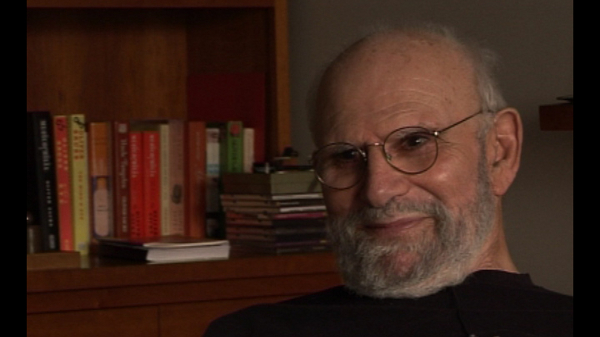NEXT STORY

Responding to Luria's work on higher cortical functions
RELATED STORIES

NEXT STORY

Responding to Luria's work on higher cortical functions
RELATED STORIES


|
Views | Duration | |
|---|---|---|---|
| 121. The blissful feeling having written Migraine | 308 | 01:11 | |
| 122. Wanting to publish addendums to Migraine | 276 | 02:11 | |
| 123. The publishing of Migraine | 283 | 02:20 | |
| 124. Starting to see the Awakenings patients | 331 | 00:46 | |
| 125. The use of L-DOPA in the Awakenings patients | 483 | 01:46 | |
| 126. Positive reviews for Migraine | 271 | 01:26 | |
| 127. Drafting books on 'tics', sub-cortical functions and... | 1 | 259 | 01:28 |
| 128. Responding to Luria's work on higher cortical functions | 278 | 01:03 | |
| 129. Letters to the editors of 'The Lancet' and 'JAMA' | 257 | 04:07 | |
| 130. Encouragement from James Purdon Martin | 328 | 00:56 |


By 1971, I found myself in a rather difficult position with regard to publishing anything about the Awakenings patients. Two years earlier, in the summer of '69, I... having been working for 18 hours a day with these patients, I took off for London in a state of exhaustion and excitement. There, when I was in London, I wrote the first nine case histories of Awakenings. I offered them to Faber. They had... they said they weren’t interested. I also wrote the torso of two other books. One was a book on tics, because by that time many of the post-encephalitic patients had developed sudden movements and tics. And the other was going to be an academic book on subcortical functions. My idol Luria – I need to talk about Luria – my idol Luria had written a book called Higher Cortical Functions. I thought I would do the equivalent with subcortical functions.
Oliver Sacks (1933-2015) was born in England. Having obtained his medical degree at Oxford University, he moved to the USA. There he worked as a consultant neurologist at Beth Abraham Hospital where in 1966, he encountered a group of survivors of the global sleepy sickness of 1916-1927. Sacks treated these patients with the then-experimental drug L-Dopa producing astounding results which he described in his book Awakenings. Further cases of neurological disorders were described by Sacks with exceptional sympathy in another major book entitled The Man Who Mistook His Wife For A Hat which became an instant best seller on its publication in 1985. His other books drew on his rich experiences as a neurologist gleaned over almost five decades of professional practice. Sacks's work was recognized by prestigious institutions which awarded him numerous honours and prizes. These included the Lewis Thomas Prize given by Rockefeller University, which recognizes the scientist as poet. He was an honorary fellow of both the American Academy of Arts and Letters and the American Academy of Arts and Sciences, and held honorary degrees from many universities, including Oxford, the Karolinska Institute, Georgetown, Bard, Gallaudet, Tufts, and the Catholic University of Peru.
Title: Drafting books on 'tics', sub-cortical functions and "Awakenings"
Listeners: Kate Edgar
Kate Edgar, previously Managing Editor at the Summit Books division of Simon and Schuster, began working with Oliver Sacks in 1983. She has served as editor and researcher on all of his books, and has been closely involved with various films and adaptations based on his work. As friend, assistant, and collaborator, she has accompanied Dr Sacks on many adventures around the world, clinical and otherwise.
Tags: Awakenings, Faber & Faber, Alexander Romanovich Luria
Duration: 1 minute, 28 seconds
Date story recorded: September 2011
Date story went live: 02 October 2012